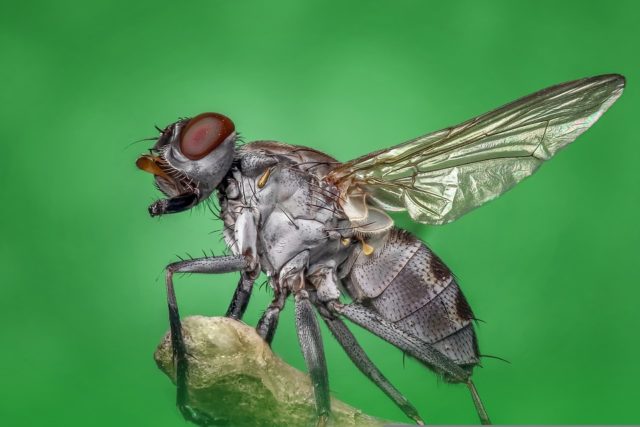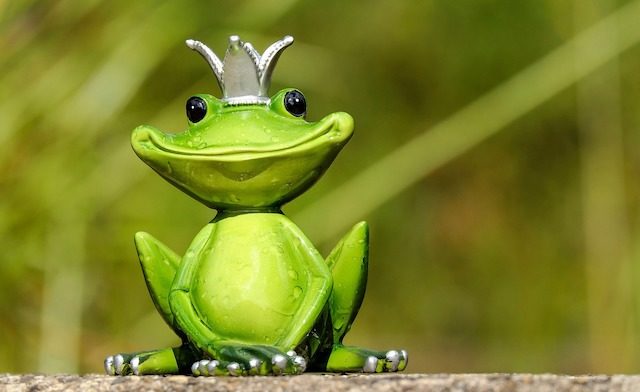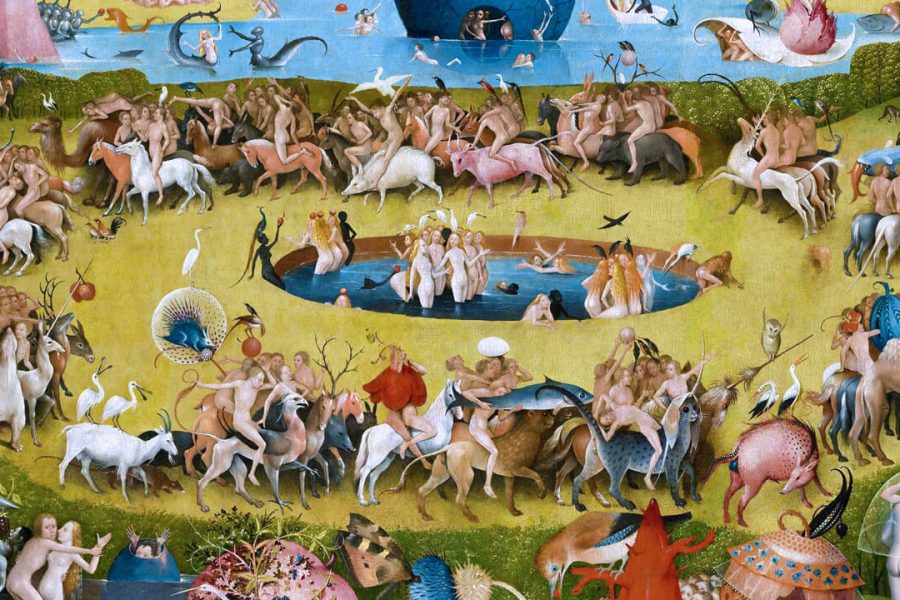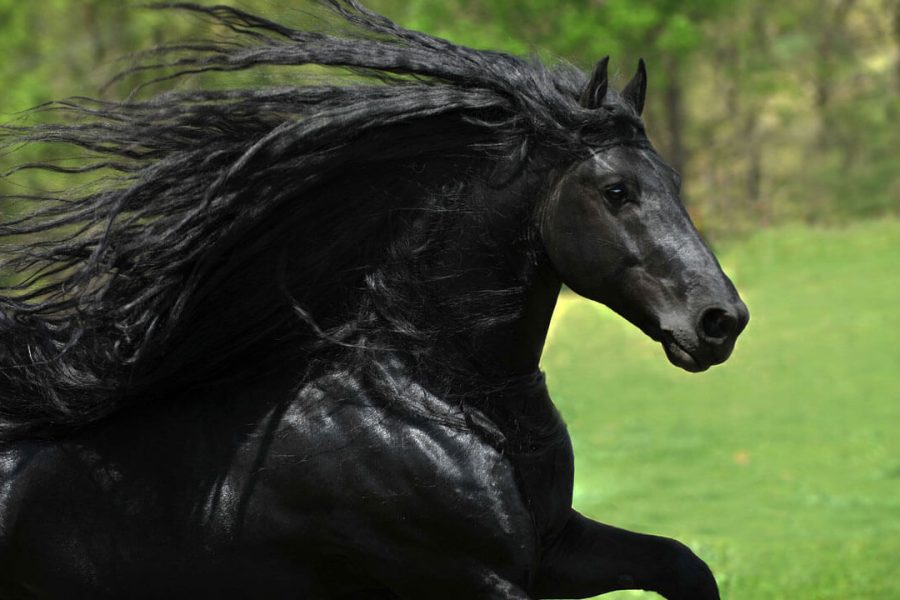When George Romero took off "Night of the Living Dead" back in 1968, it set in motion a slow, voracious machine that would go on to consume pop culture years later. In most people's minds, the zombie genre has peaked and is now in the twilight of its relevance, but with a solid stable of zombie movies still being produced each year, and a universe "The Walking Dead" branching into multiple spin-offs, like its antagonists, will never die. Nowhere is this more evident than in the world around us, where anything that even remotely plays with the same tropes is immediately labeled as a zombie.
10. Bath Salt Zombie
2012 was such an innocent time. The first Avengers movie was in theaters, Barack Obama was president, and the media was convinced that zombie junkies were eating faces on the freeway. Thus began the rise of the infamous zombie bath salts.
In May 2012, a naked man attacked another man on a Miami freeway. The attack was caught on video and occurred in broad daylight. The assailant, Rudy Eugene, bit off most of his victim's face, right to the bone . Police had to shoot him four times. Reports of the incident also immediately linked him to a relatively new and unheard of drug called bath salts. Officials said users were going crazy, overheating, displaying extreme violence and increased physical strength . And they appeared other stories , although nowhere near as terrible as the original. Basically, they were describing a drug that turns you into a zombie.
It is noteworthy that shortly after the toxicology report was published, in Eugene's body there was no no evidence presence of bath salts, only marijuana. It's not that they necessarily blamed marijuana, they just couldn't figure it out. By the end of 2012, the stories had disappeared and the bath salts were virtually gone. disappeared .
9. Zombie mushroom Ophiocordyceps
The average person probably isn't too familiar with the types of mushrooms. Aside from the mushrooms we eat, most other types are fairly obscure simply because most of us have no reason to ever know about them. But there is one small exception, and that's cordyceps. Thanks to the popular game series The Last of Us The cordyceps fungus became a pop culture phenomenon, even though it never appeared in the game. The game simply capitalized on an idea that people couldn't resist: fungal zombies.
Ophiocordyceps has been something of a darling of online media and pop culture, with articles appearing explaining how this bizarre life form works, including profiles in New York Times And Atlantic In case you missed the initial burst of articles, the fungus basically attacks insects like ants. A spore of the fungus gets inside the ant and starts growing. The ant continues on, but the fungus eats as much of the insect's insides as it can without killing it. Then, when it's grown enough, the fungus can project itself onto the ant's head and appendages. It will use the ant's legs like a puppeteer and trick it into climbing up a blade of grass or something similar to a high point. Once in the right spot, the fungus glues the ant in place and flies out of its head. New spores are released and fall down where other ants can become infected.
The parallels with zombies are pretty obvious, as the fungus kills effectively, but continues to use the ant and, of course, infects others from within. Luckily, doing the same to humans isn't that hard, at least as far as we know.
8. Haitian Voodoo Zombies

Before George Romero introduced us to the walking dead, there were a few other zombie movies out there. Perhaps the most famous of these was 1932's White Zombie, which cast Bela Lugosi as a Haitian voodoo master, which made sense to audiences in 1932. His zombies awaken from a trance.
There is a difference between Romero's zombies and what some would call voodoo zombies that even Romero understood. In fact, he didn't use the word "zombie" in his first film because he believed he had created ghouls , and zombies were creatures of voodoo. In this system, a boko or bokor, a practitioner of voodoo magic, can separate the soul from the body to create zombie . It is not a flesh-hungry monster, but rather an automaton, an undead slave that carries out the bokor's orders and can even be used for good.
In 1983, the ethnobotanist Wade Davis claimed to have found a scientific explanation for voodoo zombies, abandoning the magical explanation in favor of a toxicological one. His work was later criticized for being unscientific, which may have created even more mystery around the idea of what voodoo zombies might be and whether there is any truth to them.
7. Zombie pigs

Depending on your worldview, the idea of a zombie pig sounds either awesome or downright terrifying. The truth about the zombie pig is a little less terrifying than the name suggests, but it does have some interesting scientific ramifications.
In the real story behind the headline, researchers managed to restore limited brain function to dead pigs. The pigs had come from a slaughterhouse and had been dead for a few hours. But a team working to understand how human brain death works, so they can hopefully reverse it, managed to take these technically dead brains and restore some cellular functions. The pigs weren't brought back to life, they literally had no bodies, but it was an important discovery in understanding how death affects the brain and what could potentially be done to save human life in the future.
Fast forward three years, and the same researchers restored cellular function in dead pigs, another step in their efforts to push the boundaries of death's finality. Again, the dead pigs weren't getting up and walking, but the ability to preserve organs and other tissues well beyond what we previously considered death could have great potential for saving lives and organ transplants in the future.
6. Zombie Flies

We've been hearing for years that honeybee populations are in danger, but the culprit hasn't always been clearly identified. Climate change, pesticides and other things have been raised. But so have zombie flies .
These flies lay their eggs inside their insect hosts, in this case honey bees, and the larvae develop inside the host, killing it in the process. Flies have been observed killing wasps and even bumblebees in this manner, but this has not been observed in honey bees. until 2012 . The fact that they had never been seen in honey bees before is actually shocking, since honey bees are very well studied. What's even more surprising is that when they were discovered and then researchers went looking for them, they found the parasites in 77% hives in the Gulf of California.
The parasites cause bees to abandon their nests and then fly aimlessly until they die and the larvae crawl out.
5. Zombie Fly/Zombie Mushroom Combo

We've seen zombie flies and zombie fungus, now let's meet zombie fly fungus. It's the worst of both worlds. Like cordyceps fungus, the spores can infect a host, which in this case is a fly. The fungus spreads inside the host and then takes control of its body, causing it to reach a climax where it dies. So far, so familiar. But somehow, it's getting much worse.
After death, the mushroom emits chemical signals , which attract males. These chemicals act as irresistible pheromones and lure males into mating. The unsuspecting males then reproduce with the very dead, very fungus-infested corpse. In the process, the living male becomes infected with the spores, and the process is repeated.
An additional worrying point is that the longer the fly is dead, the more attractive It becomes attractive to males due to the fact that more seductive spores are produced.
4. Zombie taxa

If you are a fan of paleontology, you may be familiar with zombie taxa It's a tricky kind of fossil phenomenon that can fool a scientist into thinking he's found something dead living where it has no business being.
What happens for zombie fossils to work is that something dies and it fossilizes. That's fine for now. Then that fossil gets transported by erosion or some similar process to some new location, much later in time, and then basically re-fossilizes. If it's discovered and it's not clear what happened, you might find a T-Rex fossil in, say, the ruins of an ancient Roman city and be completely confused. That's an extreme example that's never actually happened, but there have been cases where dinosaur teeth have been found in fossils dating back to the creatures' long-gone extinction.
3. Zombie storms

Zombie storm is a term you won't hear your local meteorologist throw around that often, but if they ever do, pay attention. Typically, big storms follow a pattern of growing in size to something big, like a tropical storm, and then fading over time, becoming weaker and weaker. A zombie storm does what the name suggests and comes back from the dead. When -that's a dead storm becomes strong and becomes a tropical storm again.
The National Weather Service appears to have coined the term in 2020 in response to Hurricane Paulette , which appeared to be on the verge of dying before picking up steam again and becoming a tropical storm again. This phenomenon is rare, but several other instances have been recorded.
2. Zombie Deer

If part of what you associate with zombies involves wasting away and shambling around without fear, then zombie deer makes sense. These poor creatures have actually been around for decades and are the victims of prion diseases , called chronic wasting disease, similar to mad cow disease. The condition can take years to fully manifest, but it causes severe weight loss, aggression, lack of coordination, drooling, and a lack of fear. So, all the potential signs of the walking dead, minus the desire to eat people.
Disease always deadly, and is also highly contagious. It exists in many states and in Canada, as well as abroad, so efforts to combat it are not going well.
1. Zombie Frogs

By now we've seen that the media is quick to call anything that appears dead but isn't a zombie. That's certainly the case with zombie frogs. But in a funny twist, there are two very different zombie frogs, and they got their names for two very different reasons.
First up is this one that seems a little easier to understand. Ever wonder where the frogs go in the Northern Hemisphere in the winter when the rest of the world freezes over? Well, they freeze with it. Species like wood frogs and some toads are adapted to freezing winters, freezing along with everything else. And not in a figurative sense, because inside the frog's body are formed real ice crystals . Their hearts stop and they no longer breathe. That is until their internal organs freeze, which they don't because they can turn their blood into their kind of antifreeze , they will be able to thaw out when spring comes and return to their lives.
Much further south in the Amazon, there is another zombie frog, a tiny little man with a bizarrely pointed nose. And why a zombie? It’s a little less impressive than you might think. They were named by a German herpetologist who noticed that when his colleagues dug around in the dirt on all fours looking for the frogs, they resembled zombie . Go figure it out.














Оставить Комментарий